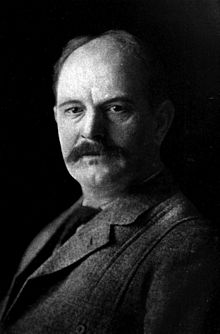Christmas Bird Count
This articleneeds additional citations forverification.(August 2018) |
TheChristmas Bird Count(CBC) is a census ofbirdsin the Western Hemisphere, performed annually in the early Northern-hemisphere winter by volunteerbirdwatchersand administered by theNational Audubon Society.The purpose is to provide population data for use in science, especiallyconservation biology,though many people participate for recreation. The CBC is the longest-runningcitizen sciencesurvey in the world.[1]
History
[edit]
In the 19th century, many North Americans participated in the tradition ofChristmas"side hunts", in which they competed at how many birds they could kill.[2]In December 1900, the U.S. ornithologistFrank Chapman,founder ofBird-Lore(which becameAudubonmagazine), proposed counting birds on Christmas instead of killing them.
On Christmas Day of that year, 27 observers took part in the first count in 25 places in theUnited StatesandCanada.The participants counted 18,500 birds in 90 species.[2]Since then the counts have been held every winter, usually with increasing numbers of observers. The 101st count, in the winter of 2000–2001, involved 52,471 people in 1,823 places in 17 countries (but mostly in the U.S. and Canada). During the 113th count (winter 2012–2013), 71,531 people participated in 2,369 locations. The National Audubon Society now partners withBird Studies Canada,theGulf Coast Bird ObservatoryofTexas(responsible for CBCs inMexico), and theRed Nacional de Observadores de Aves(RNOA, National Network of Bird Observers) and theInstituto Alexander von HumboldtofColombia.[citation needed]
The greatest number of bird species ever reported by any U.S. location in a single count is 250, observed on December 19, 2005, in the Matagorda County-Mad Island Marsh count circle aroundMatagordaandPalacios, Texas.[3]The greatest number of bird species ever reported by a CBC circle in the world is 531, observed on December 21, 2013, in the Cosanga-Narupa count (previously known as the Yanayacu count) on the eastern slope of the Andes in Ecuador.[4]
Methods
[edit]Each individual count is performed in a "count circle" with a diameter of 15 miles (24 kilometres).[5]At least ten volunteers, including a compiler to manage things, count in each circle. They break up into small parties and follow assigned routes, which change little from year to year, counting every bird they see. In most count circles, some people also watch feeders instead of following routes.
Counts can be held on any day from December 14 to January 5 inclusive.
The results, providing data on winter ranges of birds, are complementary to those of theBreeding Bird Surveys.
See also
[edit]- Australian Bird Count
- BioBlitz– "24-hour inventory"
- Breeding Bird Survey
- Great Backyard Bird Count
- Tucson Bird Count
- Citizen science
References
[edit]- ^"Annual OKC Christmas Bird Count set Saturday".The Oklahoman.Photography by Steve Gooch. Oklahoma City, Oklahoma: The Oklahoma Publishing Co. December 13, 2015. p. 12B.RetrievedAugust 27,2018– via Newspapers.
{{cite news}}:CS1 maint: others (link) - ^abBartlett, Colin (January 8, 2005)."Marine bird numbers on the decline".Birding.The Star.Nanaimo, British Columbia, Canada: Nanaimo Daily News. p. A19.RetrievedAugust 27,2018– via Newspapers.
- ^"Mad Island Marsh Christmas Bird Count"(Press release). The Nature Conservancy. September 29, 2008. Archived fromthe originalon November 2, 2008.
- ^https:// audubon.org/content/114th-cbc-central-and-south-america-regional-summary114th CBC Central and South America Regional Summary
- ^"Christmas Bird Count Compiler Resources".National Audubon Society. January 8, 2018. I'd like to set up a new Christmas Bird Count circle, what do I do?.RetrievedAugust 26,2018.
Further reading
[edit]- Richman, Talia (January 1, 2018)."Bird count more than just a game".The Baltimore Sun.pp. 1, 9.RetrievedAugust 26,2018– via Newspapers.Page 9 content located athttps:// newspapers /clip/23180435/christmas_bird_count_more_than_game_pt2/.
